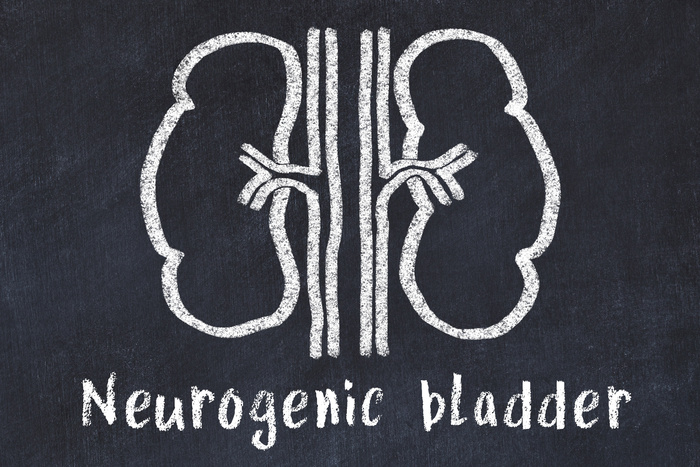Neurogenic Bladder
What is Neurogenic Bladder?
What is Neurogenic Bladder?
Neurogenic bladder (also called neurogenic lower urinary tract dysfunction) is lack of bladder control due to brain, spinal cord, or nerve problems. Under normal conditions, the urinary system’s muscles and nerves work together. Nerves carry messages among the bladder, spinal cord, and brain, telling the bladder muscles to hold or to release urine at the right time. In addition, the urethra (the tube that carries urine out of the body) has muscles that help keep it closed so that urine does not leak out until the bladder muscles contract, forcing urine out.
In people with neurogenic bladder, these nerves and muscles do not coordinate the way they should. This condition occurs in millions of Americans. Neurogenic bladder can arise from different causes and produce different symptoms, depending on the type of nerve damage that has occurred
Symptoms of neurogenic bladder
- Urinary tract infection (UTI). This is often the first sign of neurogenic bladder, and repeat UTIs can occur in people with both an overactive and underactive bladder. The condition arises from bacteria, viruses, or yeast growing in the urinary tract. Infection may occur in the bladder, ureters, or kidneys.
- Urine leaks. Urine may leak due to overactive bladder muscles that squeeze more often than normal, including at times before you are ready to pass urine. This is called urinary incontinence. Leaks may involve just a few drops or a large gush of urine, and may also occur during sleep.
- Frequent urination. The need to urinate frequently may happen with overactive bladder (OAB), when you feel a sudden urge to pass urine. Urine leaks may also occur. Urination may occur frequently (more than 8 times in 24 hours).
- Trouble urinating. With underactive bladder symptoms, you may dribble only a bit of urine and be unable to empty your bladder fully (urinary retention) or at all (obstructive bladder). The sphincter muscles around the urethra may remain tight when you try to empty your bladder, and the bladder muscle may not squeeze when it needs to. This symptom can occur in people with diabetes, MS, polio, syphilis, or in those who have had major pelvic surgery. Some people have symptoms of both overactive and underactive bladder.
- Kidney stones. Stones of the upper and lower urinary tract are frequently observed in spinal cord injury patients, including those with neurogenic bladder.
- Damage to the tiny blood vessels in the kidney. This may happen if the bladder becomes too full and urine backs up into the kidneys. This extra pressure may lead to blood in the urine and kidney failure.
Causes of neurogenic bladder
Neurogenic bladder can occur in people who have a neurological disease or injury, including:
- Birth defects (like spina bifida) that affect the spinal cord
- Brain or spinal cord injury
- Brain or spinal cord tumors
- Diabetes
- Genetic nerve problems
- Herniated disks
- Heavy metal poisoning
- Infections
- Major pelvic surgery
- Multiple sclerosis
- Parkinson’s disease
- Stroke
How is neurogenic bladder diagnosed?
Neurogenic bladder involves the brain, spinal cord, and bladder, so all three will be examined. Your health care provider will take a medical history and review your daily habits, which may include information about the symptoms you are having, how long you have had them, their effect on your life, and information about your past and current health issues.
Bring a list of your over-the-counter and prescription drugs. Your health care provider may also ask you about your diet and about how much and what kinds of liquids you drink during the day. Other tests and tools may include:
- Bladder diary. You note how often you go to the bathroom and any time you leak urine.
- Pad test. You wear a pad that has been treated with a special dye and that changes color when you leak urine.
- Physical exam. For women, the health care provider may look at your belly, pelvis, and rectum. For men, the belly, rectum, and prostate may be checked.
- Urine test. A urine culture tests your urine for infection or blood.
- Imaging tests. A bladder ultrasound measures the amount of urine left in the bladder. Other imaging tests, such as an X-ray or CT scan, may also be performed, including on the skull and spine.
- Urinalysis with cystoscopy. A hollow tube called a cystoscope is inserted into the urethra and then into the bladder. The lens in the cystoscope allows a doctor to examine the bladder lining.
- Urodynamics. A series of tests measures lower urinary tract function. These tests reproduce a person’s voiding patterns to help identify any underlying problems. You may be asked to pass urine into a special funnel to see how much urine you produce and how long it takes. A catheter may be inserted into your bladder, to drain your bladder or to add water to it, and the resulting pressure checked.
How is neurogenic bladder treated?
Treatment for neurogenic bladder depends on the cause and is aimed at controlling your symptoms, preventing kidney damage, and improving your quality of life.
- Lifestyle Changes. Also called behavioral treatments, these changes can be made daily to control symptoms and are a good first step especially for people with less nerve damage. They include:
- Scheduled voiding. Instead of going when you first feel the urge, try to hold your urine and pass it at set times. This routine emptying may include trying to urinate even if you do not feel the need. Keeping to a set schedule can lengthen the amount of time you can hold your urine.
- Double voiding. After passing urine, wait a few seconds to a minute and then relax and try again to empty the last drops from your bladder. This can help those who have a hard time emptying their bladder or who have the steady urge to void after already passing urine.
- Delayed voiding. If you have overactive bladder (OAB) symptoms, start by delaying urination for a few minutes. Slowly increase the time to a few hours. This helps you manage the urge to urinate.
- Dietary changes. Limit foods and drinks that can irritate the bladder. These can include spicy foods, coffee, tea, and colas. Pay attention to how food and drinks affect you and your symptoms.
- Pelvic floor exercises. Your healthcare provider or a specialized physical therapist can teach you exercises to help relax your bladder muscle when it starts squeezing, or to increase the strength of your sphincter muscles.
- Medications. Several different types of medication are used to treat neurogenic bladder:
- OAB drugs reduce bladder contractions that create the urge to urinate, improve bladder control, lower urinary frequency, increase bladder storage, or empty the bladder. They may be taken by mouth or delivered through the skin with a gel or a patch.
- Preventive antibiotics may be given to reduce infection.
- Botulinum toxin (Botox®) may be injected into the bladder muscle to help keep your bladder from contracting too often. Over time, this treatment wears off and may need to be repeated in 6 months or a year.
- Catheterization. Two types of catheterization may be used to treat neurogenic bladder:
- Clean intermittent catheterization (CIC) may be performed by you or by a healthcare provider, and can help improve bladder function after several weeks or months. A thin tube is inserted through your urethra and into your bladder several times during the day to empty your bladder. Depending on your symptoms, CIC may be done 3 to 4 times a day. The catheter is left in place only long enough to empty your bladder.
- Continuous catheterization involves a healthcare provider inserting a catheter through your urethra or placing it surgically through a small incision in your lower belly, directly into your bladder. This catheter (called a suprapubic tube) drains your urine at all times and needs to be changed every 4 to 6 weeks.
- In-office procedures. These therapies are used when other drugs or lifestyle changes are not sufficient. Minimally invasive procedures done in your healthcare provider’s office to treat neurogenic bladder include:
- Sacral neuromodulation (SNS). The sacral nerves carry signals between your spinal cord and the bladder. Changing these signals can improve OAB symptoms. The surgeon places a thin wire close to the sacral nerves. Then the wire is connected to a small battery placed under your skin. It delivers harmless electrical impulses to the bladder to stop the signals that can cause overactive bladder.
- Percutaneous tibial nerve stimulation (PTNS). This method uses a needle inserted into the tibial nerve in your leg. The needle connects to a device that sends electrical impulses. The impulses travel to the tibial nerve and then to the sacral nerve. Most patients receive 12 weekly treatments and then monthly treatments.
- Surgery. This option is used only in very rare and serious cases, when nothing else can help. Surgeries include:
- Artificial sphincter. This device helps treat severe urinary incontinence when the urethral sphincter muscle doesn’t work correctly. A cuff is inserted around the urethra while a pump is placed under the skin in the scrotum or labia. The pump is used to open the sphincter cuff, allowing you to pass urine.
- Urinary diversion surgery. The surgeon creates an opening called a stoma on the belly. Depending on the surgery, a catheter can be passed through the stoma to empty the bladder or an external collection pouch is placed over the stoma to catch the urine.
- Bladder augmentation (augmentation cystoplasty). Part of the intestine is removed and attached to the walls of the bladder. This increases the size of the bladder and helps it store more urine.
- Sphincter resection. The weak portion of the urethral sphincter muscle is removed. In some cases sphincterotomy is performed, in which the entire muscle may be cut.
- Surgery may also be used to remove stones or blockages.

